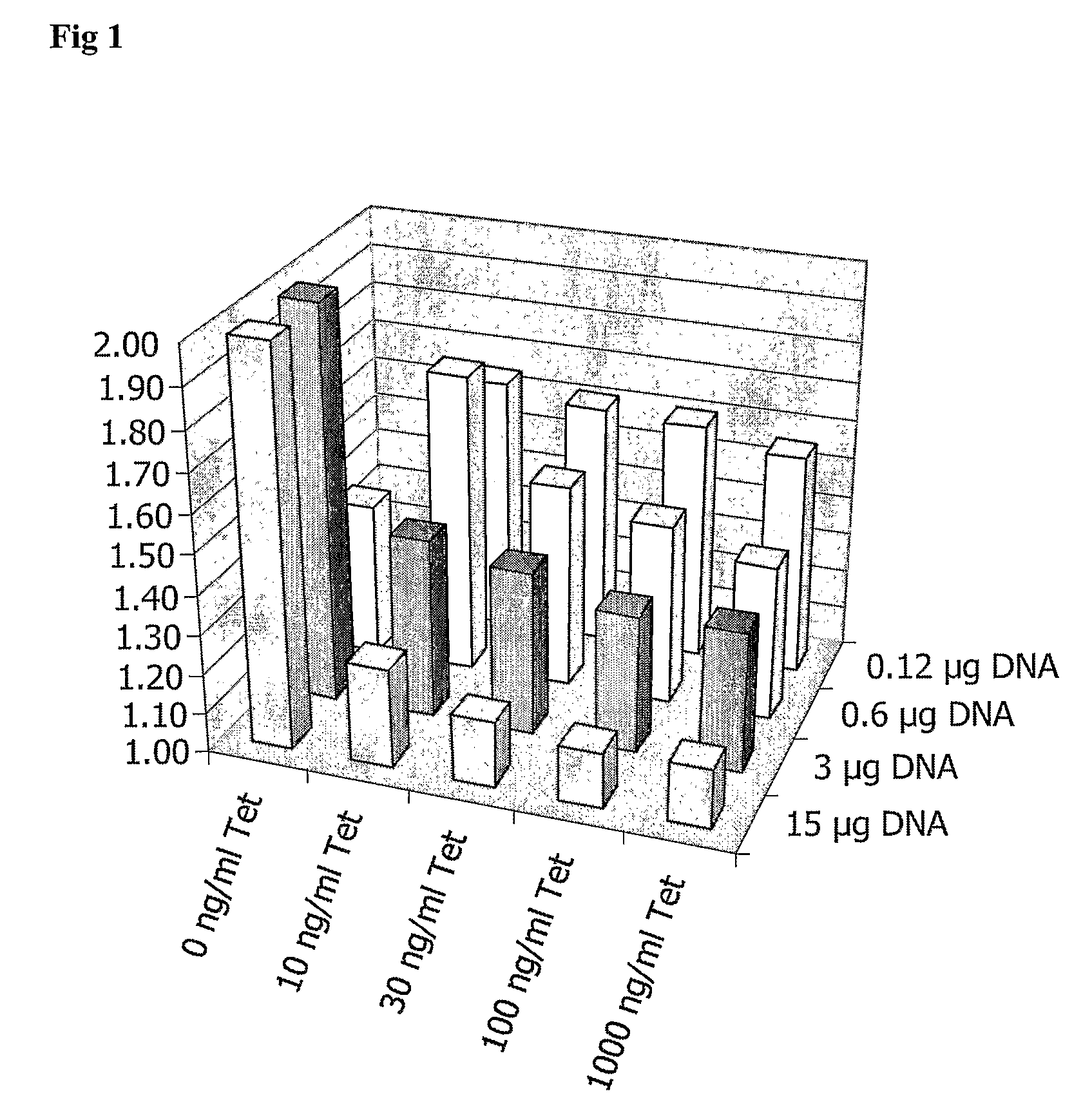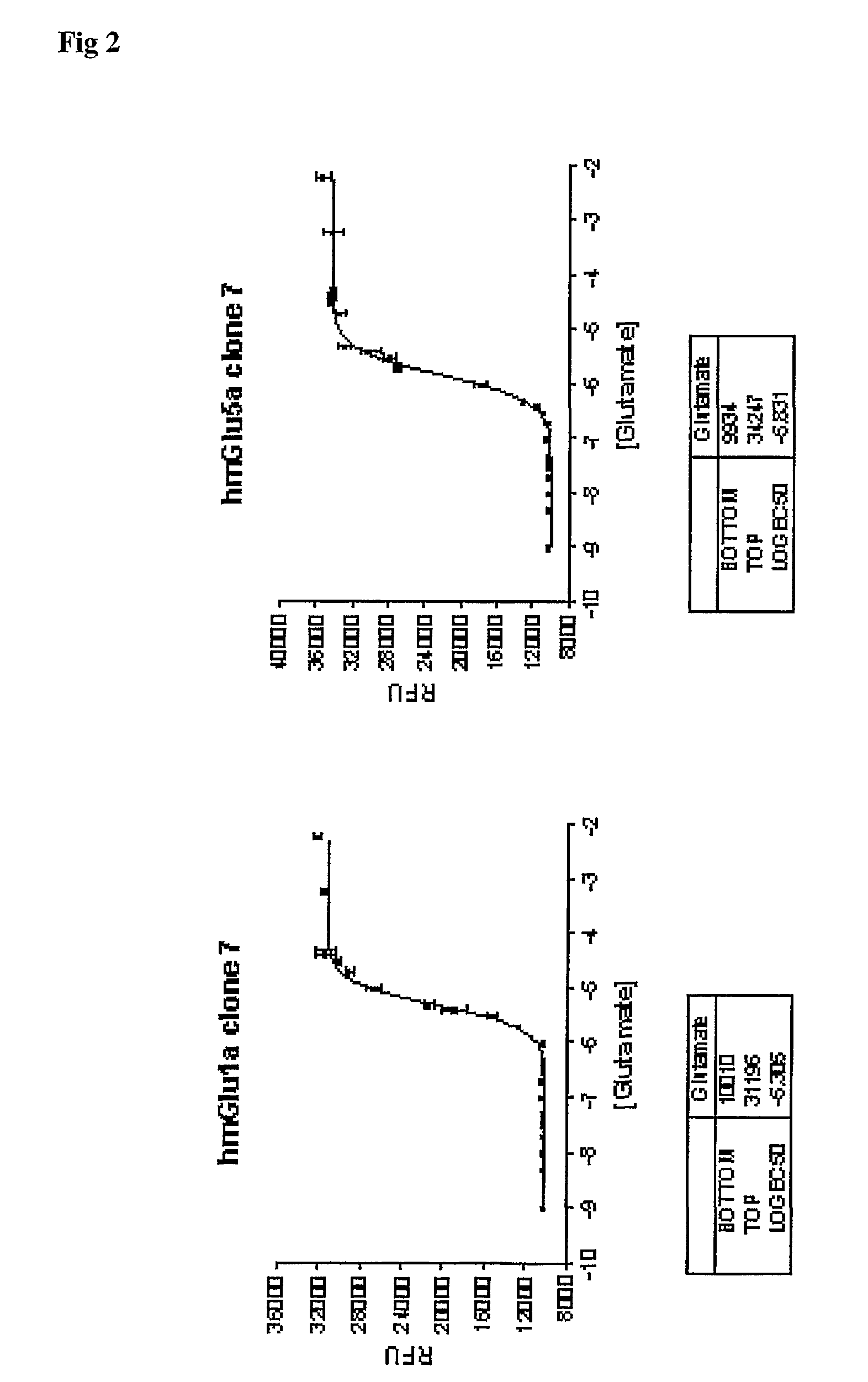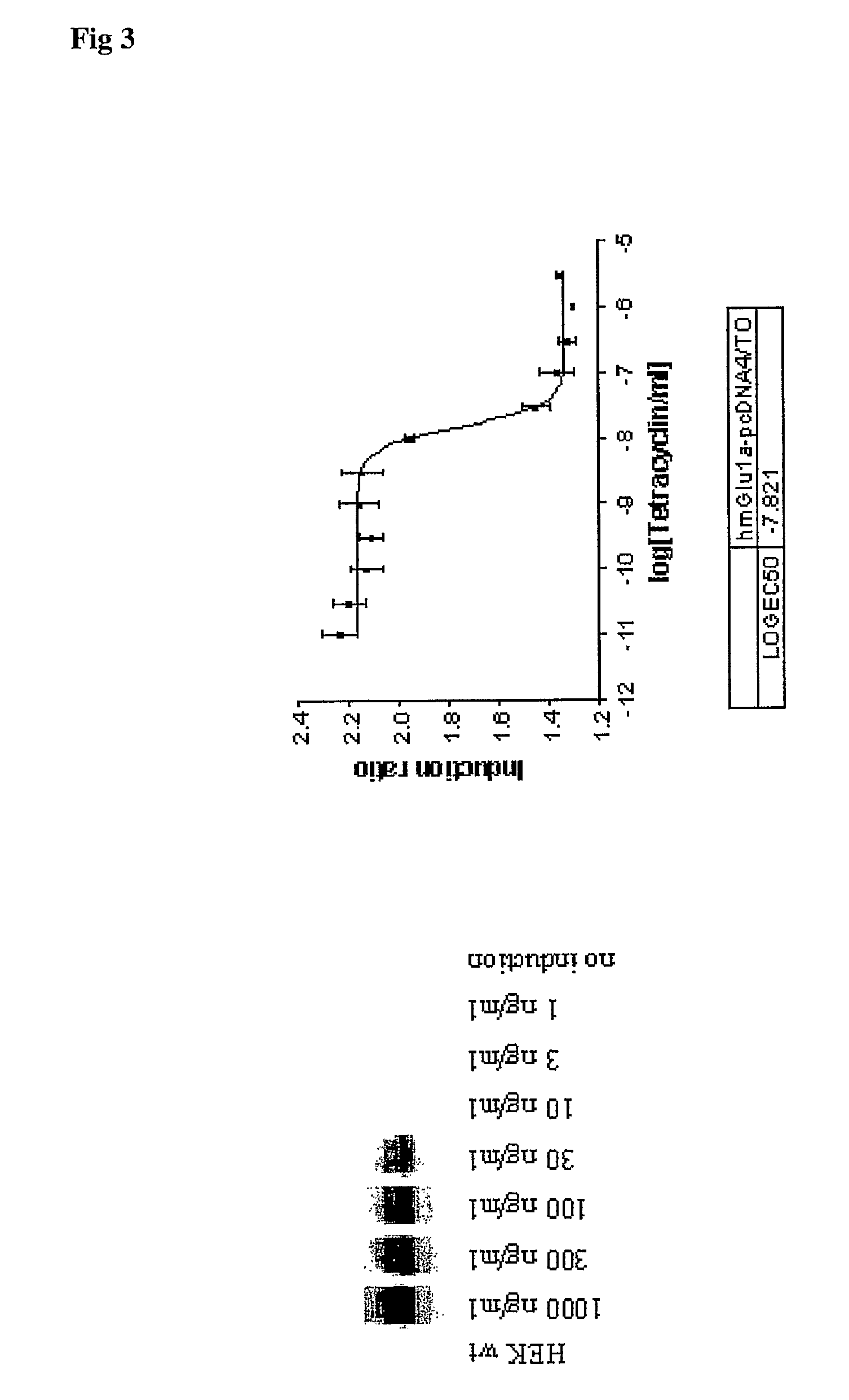Functional Screening Assay
a screening assay and functional technology, applied in the field of functional screening assays, can solve the problems of affecting the viability of cell lines expressing these receptors, affecting the use of native mglurs for screening, and hampered search for therapeutic agents which will bind and specifically modulate the function of group i mglurs
- Summary
- Abstract
- Description
- Claims
- Application Information
AI Technical Summary
Benefits of technology
Problems solved by technology
Method used
Image
Examples
Embodiment Construction
[0032] The present invention is based on the finding that G-protein coupled receptors such as the metabotrobic glutamate receptors, and in particular the Group I mGluR receptors, have an optimal expression level when it comes to the use of the recombinant receptors in both functional and binding assays. In present pharmacological research compound library screening is typically performed using assay components that allow both functional screening, i.e. the capability of a compound to modulate the receptor activity as well as binding experiments, i.e the capability of a compound to interact with the receptor protein. These assay are preferably performed using the human recombinant material. With G-protein coupled receptors however, one is confronted with the problem that functional expression requires correct post-translational processing, including integration into the plasma membrane, and accordingly high protein expression levels do not automatically result in good functional expr...
PUM
| Property | Measurement | Unit |
|---|---|---|
| Concentration | aaaaa | aaaaa |
Abstract
Description
Claims
Application Information
 Login to View More
Login to View More - R&D
- Intellectual Property
- Life Sciences
- Materials
- Tech Scout
- Unparalleled Data Quality
- Higher Quality Content
- 60% Fewer Hallucinations
Browse by: Latest US Patents, China's latest patents, Technical Efficacy Thesaurus, Application Domain, Technology Topic, Popular Technical Reports.
© 2025 PatSnap. All rights reserved.Legal|Privacy policy|Modern Slavery Act Transparency Statement|Sitemap|About US| Contact US: help@patsnap.com



